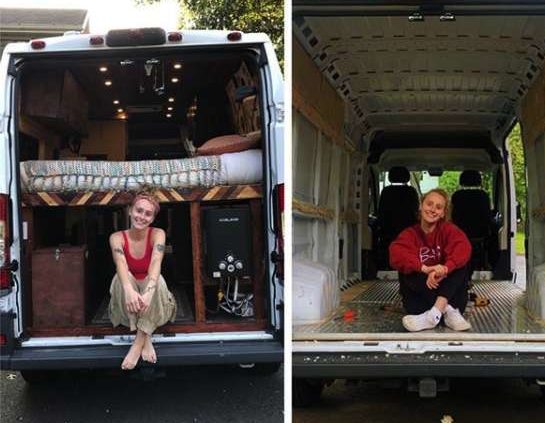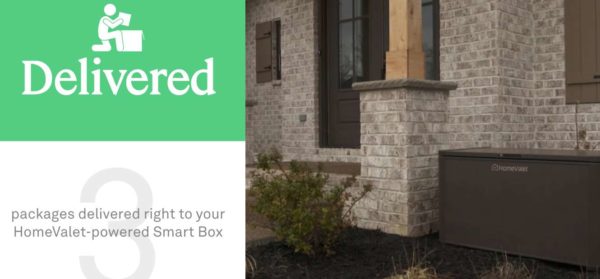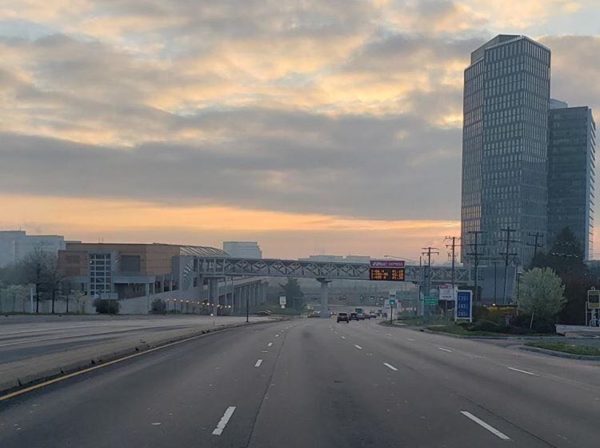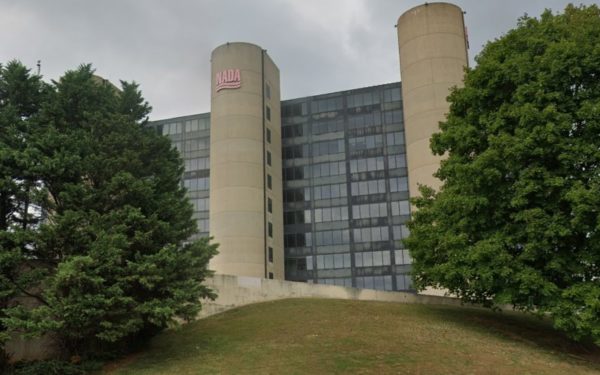Tyson’s based startup HomeValet is gearing up to find a solution to the “last yard” of contactless delivery.
After the COVID-19 pandemic increased demand for contactless delivery, HomeValet’s Co-Founder and COO Jack Simms said the company’s temperature-controlled “smart-box” is the future of delivery.
HomeValet’s Smart box which is slated to go to market “later this fall” Simms said. The product is a box where anything from groceries to gadgets purchased online can be delivered. People can make purchases and manage delivers with their app, having a contactless experience with their delivery
“The future of grocery was already getting interesting when we started HomeValet,” Simms said in a statement. “This crisis, however, has dramatically accelerated the need and demand for immediate ‘last-yard’ solutions. So, while our work has not necessarily changed, we believe it’s become more important.”
While Simms said his company was working on the box before the pandemic, the demand for such an item is there. Because of social distancing concerns, many food delivery services have offered “contactless delivery” where costumers pay in advance and the delivery driver drops the food off at the front door, rather than directly handing it to the customer.
Simms said the pandemic has created a sense of urgency within his company. While his co-founder John Simms, filed the original patent years ago, the pandemic has rapidly changed consumer habits and has sped-up their timeline, pushing them to go to market sooner.
“What has been interesting about the pandemic for us however is that we have seen consumer needs transform overnight at an accelerated pace,” Simms said. “The consumer habits we predicted when ideating HomeValet and expected to grow over time, are now firmly embedded in consumers’ daily lives from contactless delivery to grocery delivery and disinfection.
On Sept. 15 HomeValet announced the acquisition of Envolve Engineering LLC, an engineering firm based in Indiana. In a press release, HomeValet said the engineering company’s knowledge of the supply chain will allow the Tysons-based startup to better scale-up production.
Image via HomeValet
Ten years into the plan to transform Tysons from a suburban “edge city” mostly known for its malls into a downtown hub to over 100,000 people and 200,000 jobs, the man tasked with seeing it through said he is optimistic about the future.
“I’m very bullish about Tysons over the long term,” said Sol Glasner, president and CEO of Tysons Partnership. “I’m not going to be Pollyanna and say that we don’t have challenging times that we have to get through. We will get through them.”
Glasner spoke to the Fairfax County Economic Development Authority; taking a measure of the ten-year benchmark of a plan that calls for transforming Tysons into an urban and economic hub by 2050. Even with the pandemic and economic downturn it caused, Glasner said he is optimistic about the future of Tysons.
In 2010, the Fairfax County Board of Supervisors passed a “comprehensive plan” to bring more development to Tysons to transform it from a suburban “edge city” into a downtown hub.
But for Glasner, who’s group is charged with assisting to help develop and market Tysons, said branding a city, known mostly for its malls, is a challenge.
“So literally as we speak, we are in the process of identifying a visual image for Tysons that will become our brand,” Glasner said. “You’ll see a lot a lot of manifestations of that.”
A key part of changing Tysons is the four Silver Line Metro stations opened in 2014, which the county plans to serve as hubs as development. Glasner said he envisions that two neighborhoods will crop up around each of the four Metro stations each with “their own vibe and their own texture.”
But transforming the “edge city’ that is full of office parks, parking lots and large malls into a livable and walkable downtown for Fairfax County is still a work in progress. Ten years into the county’s plan, Tysons still faces numerous challenges, namely the cost of housing and finding a way to make the city more walkable, Glasner said.
The cost of housing is a county-wide problem with Fairfax County having the highest housing cost in Virginia, according to 24/7 Wall Street.
But even with the challenges and the COVID-19 pandemic and the recession it has caused, Glasner said he has high hopes for the future of Tysons.
“Our ticket to overcoming the transitory challenges we are facing is what I’ve seen among our Tysons stakeholders,” Glasner said. “People have stepped up to the plate in terms of pivoting to make as much lemonade as you can out of the lemons.”
Photo courtesy Ed Schudel
(Updated 9/18) After hours of passionate public input at their meeting Tuesday, the Fairfax County Board of Supervisors passed a ban on carrying guns on county property.
The Board of Supervisors passed the ordinance 9-1, immediately taking effect and applying to County buildings, parks, recreation and community centers.
The state law that let Fairfax County ban guns on public property, is something that Jeff McKay, chairman of the Fairfax County Board of Supervisors, said the county has been asking for decades. Similar bans were implemented in Alexandria, Arlington, and Falls Church.
“There is also a lot of fear in this community about guns,” McKay said. “So while gun rights advocates are concerned for their own safety, you have to understand there [are] a ton of people in this county worried about guns — period.”
In April, Gov. Ralph Northam signed a new gun control law enabling local governments to ban guns on public property and spaces. The bill followed a charged legislative session in Richmond, where armed pro-gun protesters showed up to the state capital as the legislature was considering proposed gun control measures.
One of the drivers of the ban on guns on public property was a 2019 shooting in Virginia Beach, where a gunman killed 12 people at a municipal building. Read More

As her friends were leaving home for college, Caroline Trotter was leaving her home in Vienna for the van life.
Caroline’s decision to live a van, touring the country instead of beginning her freshman year of college in a classroom during a pandemic was a “genius” move in hindsight, her father Paul Trotter said.
Instead of following tradition and moving into a cramped and static dorm room somewhere, Trotter opted for a mobile one — a white, 2016 Ram ProMaster. Caroline, 18, left just after Labor Day and has far made it as far as Colorado, posting photos along the way.
With the COVID-19 pandemic closing college campus and keeping students stuck in dorms, Caroline’s decision in January to opt out of the normal freshman experience and to drive around the U.S. in a van seems like a prophetic move. The James Madison High School graduate was always “a bit of a non-conformist” her father said, so when his daughter came to him with the idea, he wasn’t surprised.
“I think it looks genius now,” Paul said. “It takes it from kind of being a weird idea that she thought of to being a pretty smart decision, to be honest. Especially with a lot of her peers are either back at home or are stuck in their dorm rooms kind of isolated and locked down.”
But just because is living in a van, doesn’t mean Caroline won’t be in school. While her father Paul said her travels will be a learning experience for his daughter she will be taking online classes for at least a year before she decides to give up the van life.
Paul who considers himself “handy” had to consult YouTube videos on how to convert the used-van into a fully-livable mobile apartment, complete with a toilet, sink, stove, bed and shower. The van is partially powered by solar panels on the roof with an internal ceiling fan that helps keep the van cool inside.
“We wanted it to be something that she could live out of basically full-time,” Paul said.
While she has no set plans, her father said, she will follow the warm weather around the country as falls becomes into winter, but just like her peers in schools, she will still have to be home for Thanksgiving and Christmas breaks, Paul said.
And for those who question a father who let his daughter forgo the traditional college life in favor of the van life, Paul has an answer.
“No one ever goes to see their therapist in their 30s because their parents supported them too much,” he said.
Photo courtesy Paul Trotter
Silverstone Senior Living is slated to build senior housing in Tysons, becoming the first potential tenant at a proposed new development that will serve as an extension for The Boro.
The “continuing care home”, will have 200 available units for seniors and will include a fitness center, a barbershop and salon, a theater and multiple dining areas, according to documents from developer the Meridian Group. Senior housing in Tysons has been traditionally hard to come by, and much of the housing in the pipeline is not cheap.
The senior housing is a part of a 1.1 million square foot extension of The Boro, an upscale development in Tysons with apartments, offices, a movie theater and a Whole Foods. If approved, the extension will be a mixed-use development with residential housing, ground-floor retail space and a health club along with senior housing.
The site of the proposed development will be on the former grounds of the National Automobile Dealers Association Headquarters located on 8400 Westpark Drive after Meridian Group acquired the property in 2018 for $33.7 million, according to the Washington Business Journal.
Plans call for four buildings on the site with Silverstone’s senior housing to be inside a 180-foot-tall structure with 260,000 square feet of gross floor space. A representative for the Meridian Group declined to comment as no other details for what will go inside the planned development have been released.
The other planned projects include two other residential buildings with ground-level retail space that will be have a maximum height of 90-feet-tall. The fourth building is slated to become the health club if approved.
“The vision is to extend The Boro development across Westpark Drive and to continue the transformation of Tysons from a suburban office park to an urban center,” Elizabeth Baker, a senior land use planner for Walsh Colucci, Lubeley & Walsh told Tysons Reporter in May.
Rezoning for the proposed development is still in the review process and likely won’t go before a public hearing until 2021, Baker said.
Image via Google Maps
A plan to demolish one of Tyson’s oldest restaurants and to replace it with a new high-rise, luxury apartment building is awaiting its next step of approval next week after hitting a recent snag.
The planned residential development, which if approved will replace the J.R. Stockyards Inn, located on 8130 Watson Street, will go before the Fairfax County Planning Commission for approval on Sept. 16.
The proposed development hit a snag in its approval process in July, with Fairfax County planning staff originally recommending the Planning Commission reject the application for the proposed apartment building because it proposal did not meet the county’s requirements for “a functioning grid of streets and provision of public parks.”
But after the developers made changes to the proposal, planning staff signed off on it and now it will go before the Planning Commission for approval. Those changes included adding funding for needed street modifications and a stronger commitment to upgrading the planned park space.
“When completed the luxury apartments on Watson Street will become an iconic image in the skyline in Tysons Corner,” KGD Architecture, the firm tasked with designing the development writes on its website. “Its striking architecture will feature a cylindrical glass tower anchored by high and low curvilinear residential towers arcing to the west and south.
Originally proposed in 2018, the proposed 26-story apartment building will be a mixed-use development with luxury apartments and an underground parking garage. Developers are billing their proposal as an attempt to help bring new life to the retail space in Tysons, with the proposed development being located next to Tysons Corner Center between Tysons and Greensboro Metro stations.
J.R. Stockyards Inn, a two-story, 42-year-old steakhouse, was one of the first restaurants to open outside of Tysons Corner Center. But since 2011, the restaurant has closed its daily service.
Photo via Fairfax County






